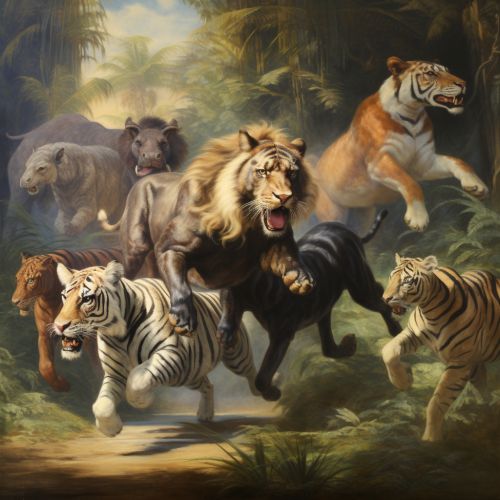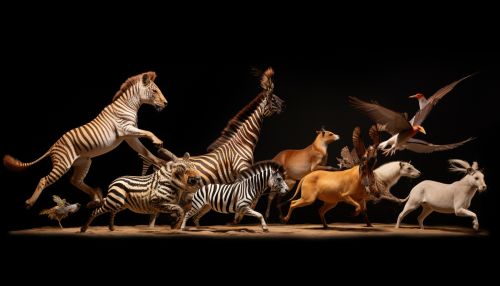Animal Locomotion
Introduction
Animal locomotion refers to the various methods that animals employ to move from one place to another. This movement can be voluntary, driven by the need for food, shelter, mating, or to escape predators, or involuntary, such as the reflex movement in response to stimuli. The study of animal locomotion, or biomechanics, is a significant branch of zoology.


Types of Locomotion
There are several types of locomotion that animals use, each adapted to their specific environment and lifestyle.
Terrestrial Locomotion
Terrestrial locomotion is the movement of animals on land. This type of locomotion is the most diverse, ranging from walking and running to hopping and crawling.
Walking and Running
Walking is the most common form of terrestrial locomotion in animals. It involves the sequential movement of limbs, allowing the animal to move forward while maintaining stability. Running, on the other hand, is a faster form of locomotion where there is a phase in the stride when all feet are off the ground.
Crawling
Crawling is a type of locomotion where the animal's body is in contact with the ground. This is common in small animals and insects like caterpillars and snakes.
Aquatic Locomotion
Aquatic locomotion is the movement of animals in water. This can be achieved through swimming or crawling on the sea floor.
Swimming
Swimming is the most common form of aquatic locomotion. Animals use a variety of methods to swim, from the undulating motion of fish to the paddling movement of ducks.
Crawling
Some aquatic animals, like starfish and sea urchins, use crawling as their primary form of locomotion. They use their limbs or tube feet to move along the sea floor.
Aerial Locomotion
Aerial locomotion is the movement of animals in the air. This is primarily achieved through flying or gliding.
Flying
Flying is a form of locomotion where the animal propels itself through the air using wings. This is common in birds, bats, and insects.
Gliding
Gliding is a form of aerial locomotion where the animal descends through the air in a controlled manner. Some animals, like flying squirrels and flying snakes, have adapted to glide from tree to tree in search of food or to escape predators.
Evolution of Locomotion
The evolution of locomotion in animals is a complex process that involves the adaptation of anatomical structures, physiological mechanisms, and behavioral patterns to the environment. The evolution of locomotion is closely tied to the evolution of the skeletal system and muscular system, as these provide the framework and power for movement.
Locomotion and Energy
Locomotion requires energy, and the efficiency of locomotion can have a significant impact on an animal's energy budget. Animals have evolved various strategies to optimize their energy use during locomotion, such as adopting energy-saving gaits or developing specialized structures for movement.
